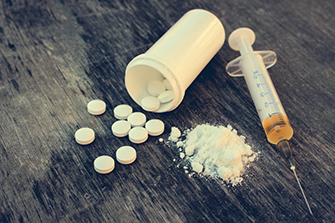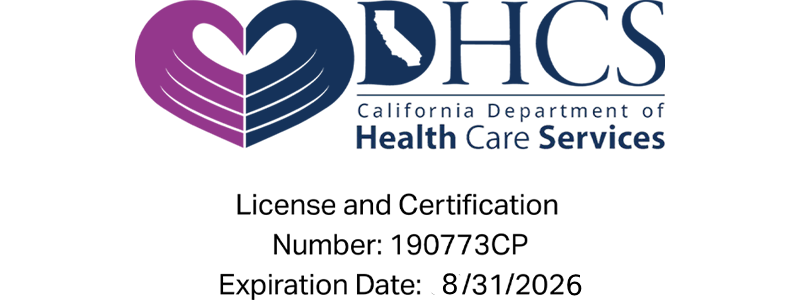Throughout your research for yourself or a loved one on opioid addiction or the opioid epidemic, you may find two similar terms: opiates and opioids. In some instances, they can be used interchangeably, but it is important to know the difference. Keep reading for more information on the difference between opiates and opioids, the dangers of both, and when to get help for opioid abuse.
The Difference Between Opiates and Opioids
Opiates and opioids are two terms that can be used interchangeably but have a small detail that makes them two different things. According to the CDC:
- Opiates refer to natural opioids such as heroin, morphine, and codeine
- Opioids refer to all-natural, semisynthetic, and synthetic opioids
Both opiates and opioids are chemicals that interfere with opioid receptors on nerve cells in the body and brain. Essentially, they disrupt the pain signal that travels from the pain point to the brain. This allows pain relief for the user while also producing a euphoric high. They are prescribed in situations where over-the-counter medications may not be strong enough, such as recovery from surgery, major injury, or chronic pain conditions. While they are safe to take for a short period of time as prescribed by a doctor, they are powerfully addictive.
Prescription opioids include:
- Fentanyl
- Oxycontin
- Vicodin
- Percocet
- Norco
- Codeine
- Morphine
- And many others
The Dangers of Opiates and Opioids
Due to the euphoric high that is produced by opiates and opioids, addiction rates are extremely high. Some of the statistics surrounding opioid use and addiction include:
- Roughly 21 to 29 percent of patients prescribed opioids for chronic pain misuse them
- Between 8 and 12 percent of people using an opioid for chronic pain develop an opioid use disorder
- An estimated 4 to 6 percent who misuse prescription opioids transition to heroin
- About 80 percent of people who use heroin first misused prescription opioids
The difference between opiates and opioids is small, which makes both are equally dangerous. Addiction is a life-long and life-threatening progressive condition. When left untreated, addiction to opioids can lead to overdose and death. Opioids are a depressant, which slows the body down. Intoxication from opioids includes drowsiness, sleepiness, slowed breathing, and slowed movements. When an overdose occurs, the body slows down to the point where the lungs stop breathing and the heart stops beating, leaving the body deprived of oxygen and leading to death.
Symptoms of Addiction to Opiates and Opioids
- Inability to stop or slow use
- Intense, uncontrollable cravings when not using
- Anxiety surrounding the drug and obtaining the drug
- Drug-seeking behavior such as multiple pharmacy prescriptions and multiple doctors
- Negative consequences such as financial hardship, legal issues, strained relationships, homelessness, and health issues
- Mood changes such as aggression, irritability, anxiety, and depression
- Changing from prescription opioids to street or black market opioids
- Isolation from friends and family to hide use or hangover
- Neglecting important responsibilities in favor of drug use
When to Get Help
If you or a loved one are experiencing the above symptoms of addiction to opiates and opioids, it is time to get help. Even though there is a difference between opiates and opioids, there is no difference in the treatment of them. Treatment for addiction to opiates and opioids is three-pronged:
- Medication-assisted detox. The first step to getting sober from opiates and opioids is to safely detox from them. Since opiates and opioids chemically rewire the brain to be dependent on them, withdrawal symptoms can be extremely uncomfortable. Medication-assisted detox helps to slowly wean the individual off of drugs so that detox is more comfortable, while also allowing for around-the-clock medical supervision.
- Therapy and counseling. Learning how to deal with triggers, cravings, and underlying mental health conditions is essential to opioid addiction recovery. Family therapy, one-on-one therapy, group therapy, and individualized treatment plans will help put you or your loved one on the right path to long-term sobriety.
- Ongoing care. Before leaving treatment, it is important to establish the ongoing care of you or your loved one’s recovery. Regular meetings, outpatient therapy, establishing boundaries, and much more can all be part of ongoing care.
About The Pointe Malibu Recovery Center
The difference between opiates and opioids is whether they are natural or not. The similarity they share is that they are deadly, but recovery from addiction is possible.
One of The Pointe Malibu’s key differentiators is our keen understanding of your need for a comfortable space where you can concentrate on yourself and your road to recovery. To that end, we optimize your recovery potential amid ultra-luxurious surroundings that include custom-appointed residences on the sands of Malibu, with panoramic oceanfront views. Just as impressive is the level of care that we offer: personal, individualized, and tailored specifically to your unique needs and personality. From our concierge-style service to our highly acclaimed therapists and doctors, we are here to make your recovery as relaxing and stress-free as possible.
If you’re ready to start your family’s journey to long-lasting recovery, we are here for you.





